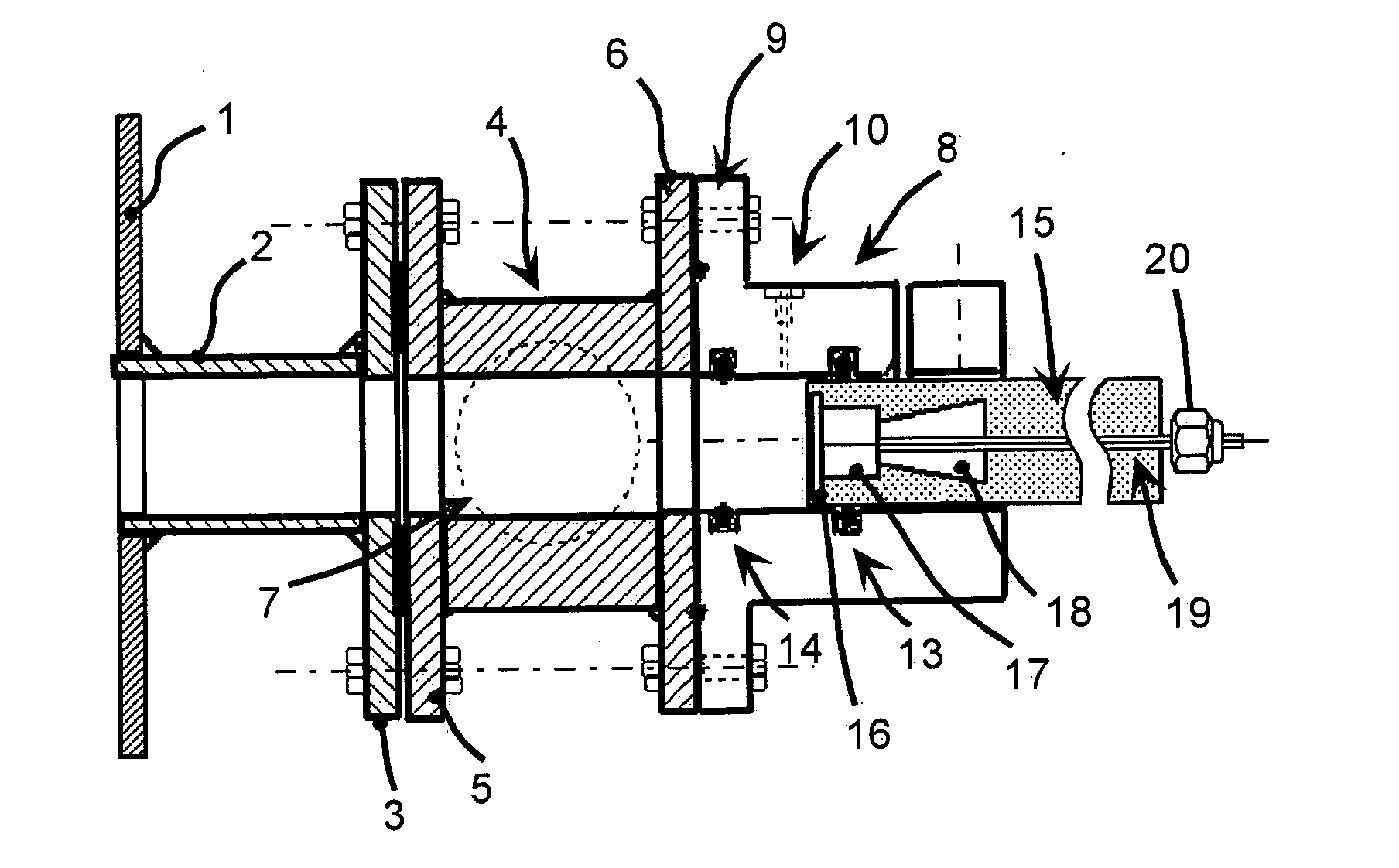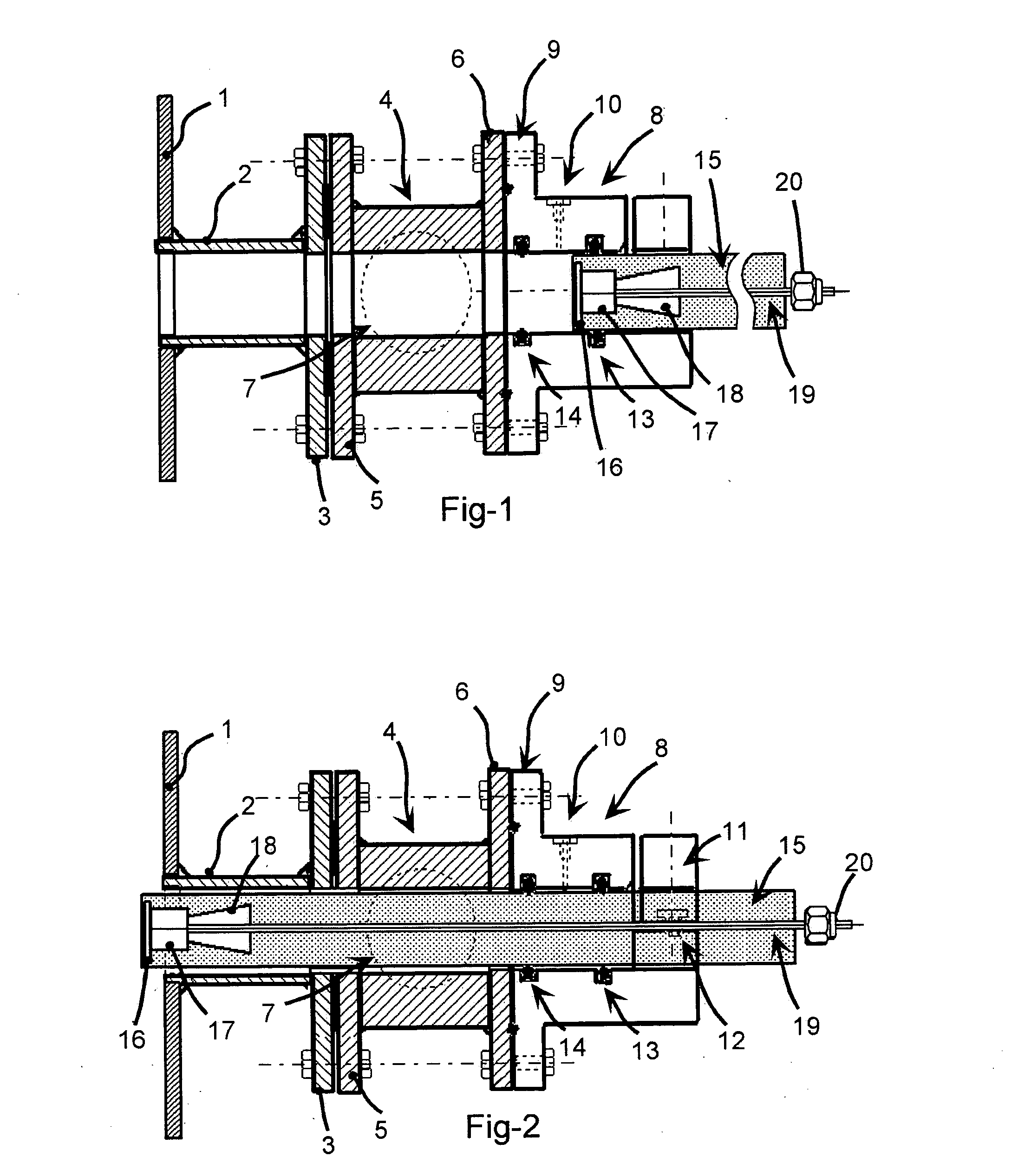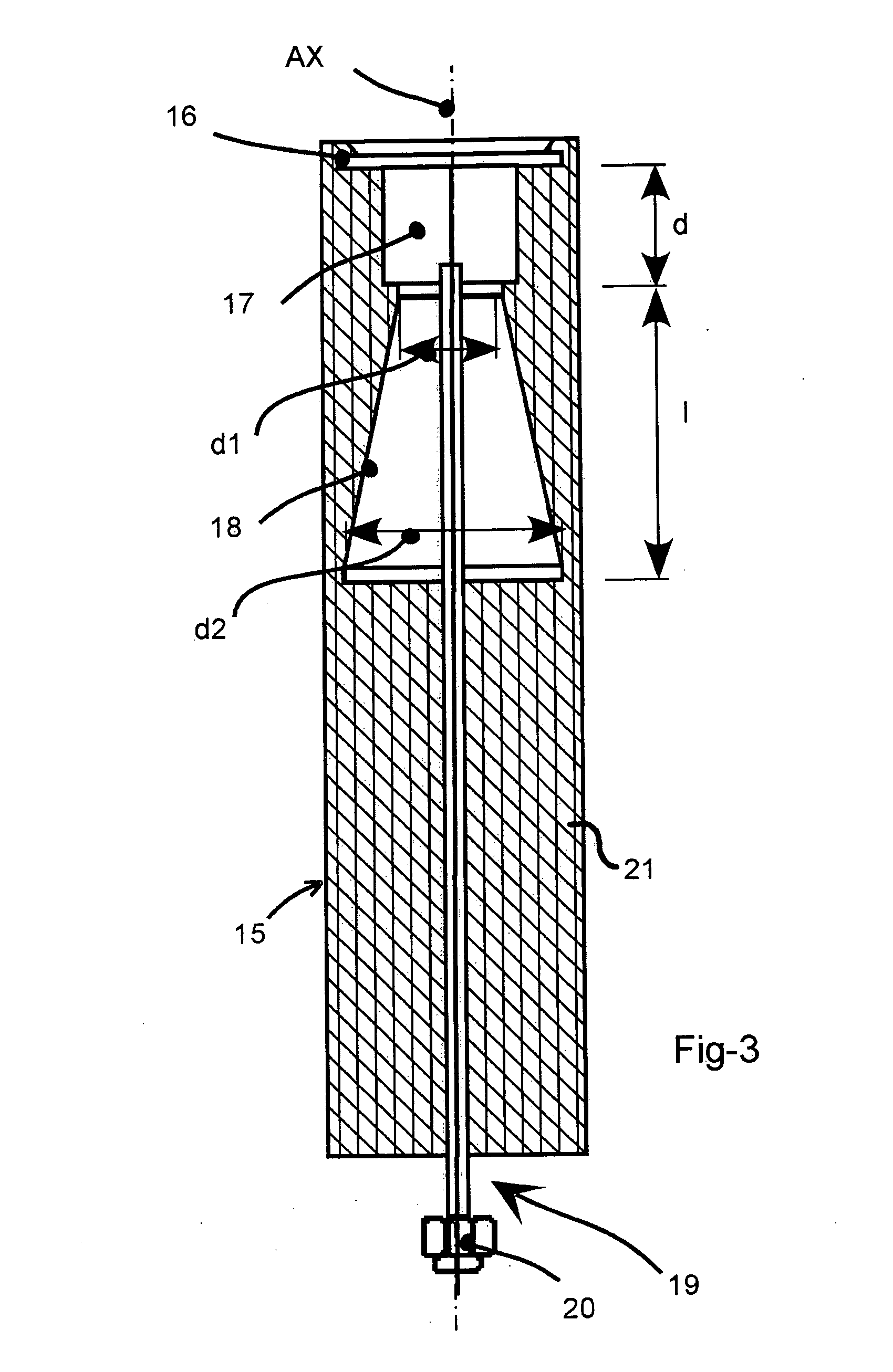Antenna for detection of partial discharges in a chamber of an electrical instrument
an electrical instrument and partial discharge technology, applied in the direction of instruments, air-break switches, testing vessel construction, etc., can solve the problems of poor uhf frequency, interference with measurements, and inability to properly use any antenna signal, so as to improve the sensitivity of the antenna, accurate partial discharge measurements, and the effect of improving the sensitivity
- Summary
- Abstract
- Description
- Claims
- Application Information
AI Technical Summary
Benefits of technology
Problems solved by technology
Method used
Image
Examples
Embodiment Construction
[0020]FIGS. 1 and 2 show a transformer tank 1 containing oil (not shown), said tank 1 having a channel 2 welded to its outside wall, the channel supporting a flange 3 having an emptying valve 4 fixed thereto. The valve 4 has two flanges 5 and 6 welded to each of its ends, respectively, the flange 5 being connected in leaktight manner to the flange 3 of the channel 2 by being fixed using peripheral bolts. In this example, the valve 4 has a ball plug 7 which is represented by dashed lines. Such an emptying valve is generally provided near the bottom of an oil-filled transformer tank in order to enable the oil to be removed therefrom when it needs to be changed, or when the transformer needs to be tested. A bushing 8 of generally cylindrical shape is situated in line with the valve 4 and includes a flange 9 at one of its ends. This flange is connected to the flange 6 of the valve 4 by means of a plurality of peripheral bolts each passing through both flanges 6 and 9.
[0021] The assembl...
PUM
 Login to View More
Login to View More Abstract
Description
Claims
Application Information
 Login to View More
Login to View More - R&D
- Intellectual Property
- Life Sciences
- Materials
- Tech Scout
- Unparalleled Data Quality
- Higher Quality Content
- 60% Fewer Hallucinations
Browse by: Latest US Patents, China's latest patents, Technical Efficacy Thesaurus, Application Domain, Technology Topic, Popular Technical Reports.
© 2025 PatSnap. All rights reserved.Legal|Privacy policy|Modern Slavery Act Transparency Statement|Sitemap|About US| Contact US: help@patsnap.com



